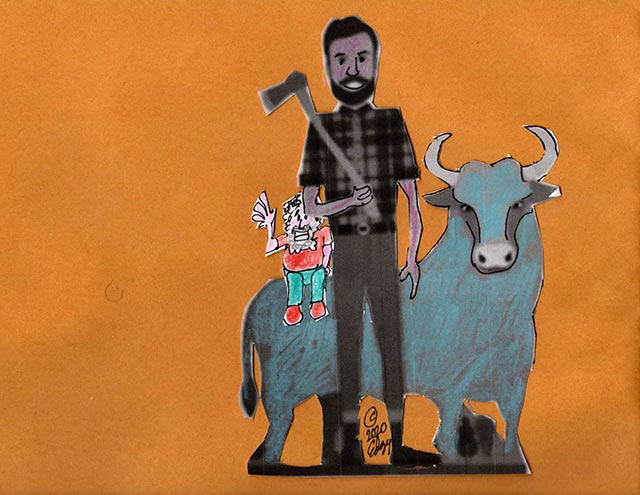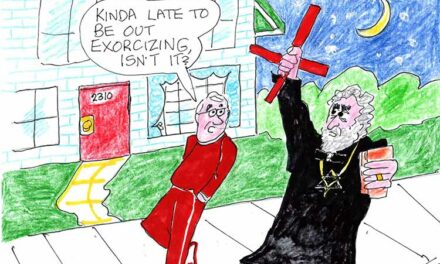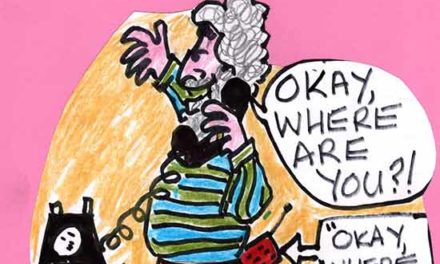Legends Oughta Fall: Who’s Kidding Whom?
Why Dr. Dre and Paul Bunyan just aren’t the same
By Ed Goldman
The word “legend” confused me as a schoolboy and I must confess there’s been little improvement in the ensuing years.
As a kid, I learned that Paul Bunyan and Davy Crockett, only one of whom was real, were “legends.” I was also taught that the part of a map explaining its various symbols and scale was called a “legend.”
Ed, Paul and Some Babe
I couldn’t reconcile how the same word could be used as a descriptor for what was essentially a little chart, as well as to characterize a compelling story, often with larger-than-life heroes, that usually ended on an inspiring note.
Well, things certainly didn’t end on an inspiring note when I failed a geography test in the fifth grade. In fact, the note it ended on was one my teacher, the aptly named Mrs. Payne, sent to my parents, requesting a conference to discuss “Edward’s apparent inability to concentrate on earth science.”
But how could I? When told to review a map’s legend, I kept searching for a little picture of Babe the Blue Ox. That was Paul Bunyan’s pet. He and Paul supposedly clocked in at, respectively, 35 and 49 feet high, at least as depicted in allegedly “life-size” statues at Trees of Mystery, in California’s Redwood National and State Parks. (You really should visit there with the kids or grandkids someday. Tell them all American people and animals used to be that big but that over many decades we shrank, due to our respective consumption of Cocoa Puffs and grass sprayed with toxic chemicals.)
As for real-life legends, I was a faithful viewer of Disney’s “Davy Crockett, King of the Wild Frontier” on TV. It featured 6’4” Fess Parker in the title role of a man said to have been no more than 5’8”. Then John Wayne, also about 6’4,” played Crockett in the 1960 movie, “The Alamo.” Geez, I thought, maybe Davy Crockett was actually tall—though not as tall as Babe the Blue Ox. I mean, that’d just be silly.
Adding to my confusion was that Crockett’s death in the historic battle of the Alamo was clearly depicted in Wayne’s version but only hinted at in Disney’s. Ergo, my time-traveling advice to Crockett would be to hang out in Disney World, not Wayne’s World.
Here are two entries from the same day in the Wall Street Journal (italics are mine—and I may need them back):
- Died: Phil Spector, legendary music producer
- Neil Young, Stevie Nicks and Lindsey Buckingham owe Daniel Elk an enormous debt of gratitude right about now. The rock legends…
When rap artist and producer Dr. Dre was hospitalized early this year, he was declared a “legendary mogul” in newspaper headlines. So, for example, is a long-retired news anchor in California’s capital whose chief accomplishment of a few decades seems to have been sitting at a desk reading from a TelePrompTer news stories someone else had written—though in all fairness, his career goes back so far that in the early days, he had to read news stories someone else had written from sheets of paper. Maybe even slate tablets. Or cave walls.
If you’re old enough or you have an ironclad grip on pop history, or both, you may recall when legends became high style in the late 1960s. That’s when the Great Lakes Mink Association (a real group) hired someone to create its Blackglama magazine campaign.
In starkly elegant black-and-white ads, many designed and shot by the (uh-oh) legendary photographer Richard Avedon, the campaign lured consumers with the tagline, “What becomes a legend most?” The implied answer, of course, was “Wearing a coat made from mercilessly slaughtered little weasels.” Avedon draped—both in the coats and languorous, seductive poses—celebrities such as Bette Davis, Lauren Bacall, Judy Garland, Barbra Streisand, Marlene Dietrich, Lena Horne, Maria Callas, Rita Hayworth, and Leontyne Price. (Actually, Bette Davis gave off less of a come-hither look than a go-to-hell look—but this was why we adored her and consider her a legend.)
I think a popular singer-songwriter-actor has tackled this “legend” business with a clever strategy. By changing his name from John Roger Stephens to John Legend, he eliminated the middleman. Which is to say he cut down on the uncertain amount of wait time until, at some point, someone would declare him a legend—preferably in his lifetime.
Ed Goldman's column appears almost every Monday, Wednesday and Friday. A former daily columnist for the Sacramento Business Journal, as well as monthly columnist for Sacramento Magazine and Comstock’s Business Magazine, he’s the author of five books, two plays and one musical (so far).













